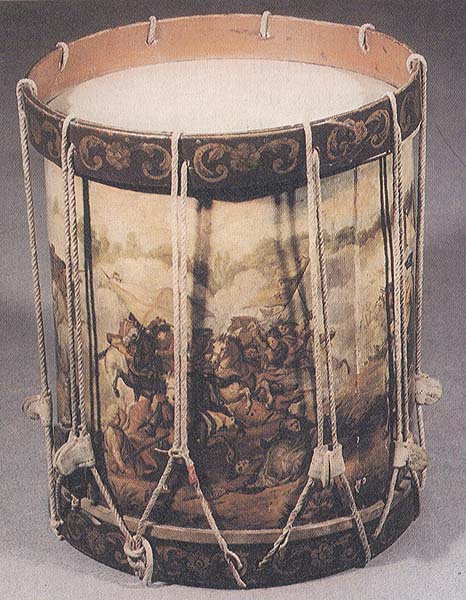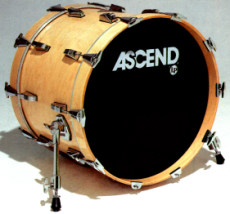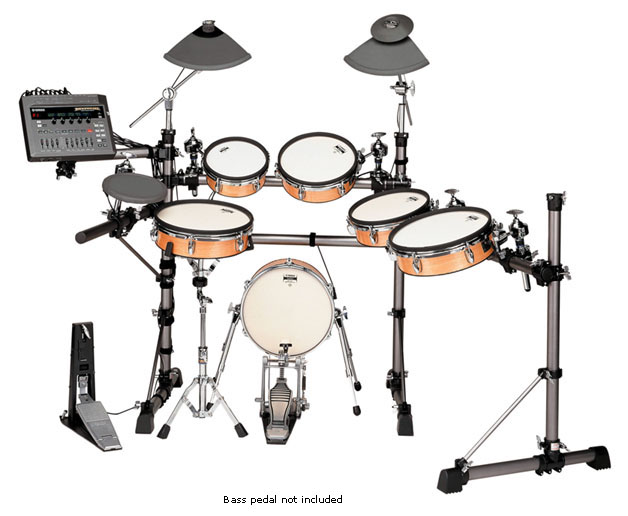
 The tom-toms are probably the drums you think of first, when you picture a drum-set. They are the 'stereotype drum'. The tom-toms originate from Africa, where the natives used them for alerting their tribes, but also for making music. Not only were they able to make drums from hollowed trunks and skins of animals, they also created various rhythms and patterns. Some of those patterns are still the basis of many music styles that are played today.
The tom-toms are probably the drums you think of first, when you picture a drum-set. They are the 'stereotype drum'. The tom-toms originate from Africa, where the natives used them for alerting their tribes, but also for making music. Not only were they able to make drums from hollowed trunks and skins of animals, they also created various rhythms and patterns. Some of those patterns are still the basis of many music styles that are played today.
Then the Greek made contact with Africa, around 2000 BC. They learned about their drums and took some with them, but were not very impressed. They did not use the drums very often. But then the Romans came. Their empire grew bigger and bigger and around 200 BC they had even invaded Greece and Northern Africa. They also learned about the drums, but, unlike the Greek, they did see use for the drums. They started using them in their armies and their orchestras. But even though they used the African drums, they did not use their patterns and rhythms, so the feeling the Africans had in their music was missing.
But then the glory of the Roman Empire faded away. Many rival tribes invaded the Empire, including the Moors, around 800 AD. They invaded Spain and brought about some African drums and rhythms. One of these instruments was a tambourine with intestines of animals, stretched against the skin of the tambourine. These intestines produce a resonance, which produces a sharp sound. In the Middle ages, this system developed into the predecessor of the modern snare drum, which today uses metal strings instead of intestines.
The bass drum is probably the drum you think of second, when you picture a drum-set. This big, low-tuned and upright standing drum gives the basis to almost all popular rhythms. In many orchestras, bands and in many styles of music, this drum forms the basis, the reference point for all the other players.
 And the Indians and the Turks are to thank for that. The Indians already used a similar big drum like the bass. Around 1550, the Turks brought this drum to Europe, via the various trade routes they had with Asia. At that time, the Turks had a very large realm, so this bass drum was used in a large area and by many people. This way, the bass drum became quite common throughout Europe.
And the Indians and the Turks are to thank for that. The Indians already used a similar big drum like the bass. Around 1550, the Turks brought this drum to Europe, via the various trade routes they had with Asia. At that time, the Turks had a very large realm, so this bass drum was used in a large area and by many people. This way, the bass drum became quite common throughout Europe.
Since 1500 AD, most of the Western European countries tried to conquer America, because they all wanted colonies there. They also killed and moved lots of Indians, and they traded Africans as slaves. That way, lots of cultures and drums were mixed together in America. The natives from Africa, brought to America as slaves, were mixed with the natives of America and with all other cultures that lived there. But the Blacks were not allowed to play their own music. That's why they created some sort of drum-set with their own African drums. But nobody knew those drums were African from origin. Why would people be interested in the music of slaves? That's why they were allowed to play those drum-sets: nobody cared anyway. In the 20th century, more people began to play on such drums. Everybody started to play those African rhythms, just because they were very good! And because the beats were played more and more on the cymbals, the size of the cymbals increased. The Chinese toms, that were initially used, were replaced for Afro/European drums and the Hi-Hat had been enlarged to make it easy to play with your sticks. So bit-by-bit the drum-set got the shape as it has now.
 When people started to use electric instruments, like the electric guitar, the electric piano, the electric violin, etc., people developed an electric drum-set as well. Instead of a wooden cylinder with various types of drumheads, they made a flat panel, about 10 centimetres thick, which they plugged into a computer. That computer can generate thousands of sounds, so you can choose a sound for every style. But of course it doesn't sound like an acoustic drum-set and it doesn't play as good as well. But when you add one or two of those panels to your acoustic drum-set, you have got both the sound and feel of an acoustic set, but also the ability to add to your play whatever sound you like.
When people started to use electric instruments, like the electric guitar, the electric piano, the electric violin, etc., people developed an electric drum-set as well. Instead of a wooden cylinder with various types of drumheads, they made a flat panel, about 10 centimetres thick, which they plugged into a computer. That computer can generate thousands of sounds, so you can choose a sound for every style. But of course it doesn't sound like an acoustic drum-set and it doesn't play as good as well. But when you add one or two of those panels to your acoustic drum-set, you have got both the sound and feel of an acoustic set, but also the ability to add to your play whatever sound you like.